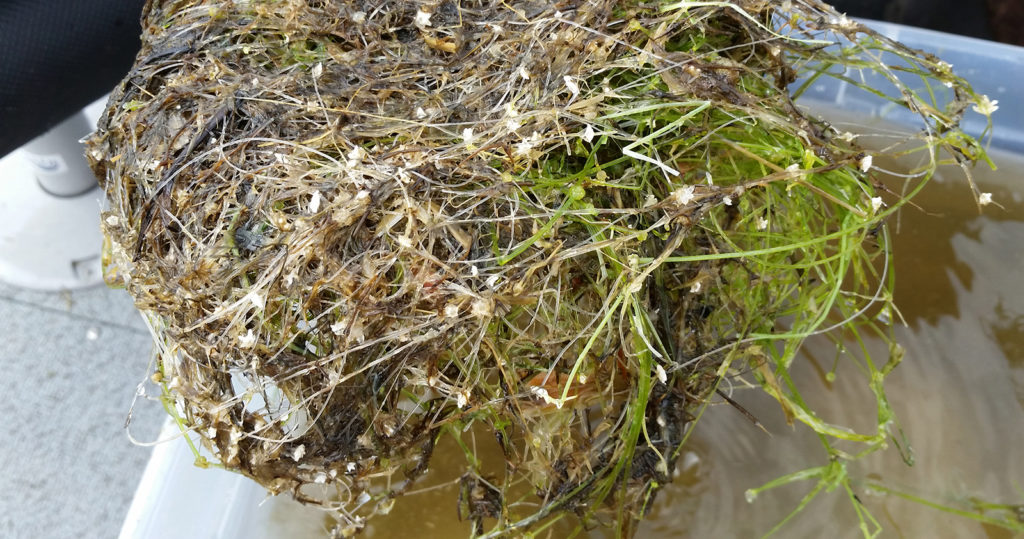
Starry Stonewort Confirmed in Grand Lake
The Minnesota DNR has confirmed the invasive algae starry stonewort in Grand Lake in Stearns County. The discovery follows an organized search of 178 lakes in 20 counties by 200 trained volunteers. This is the first new confirmation of starry stonewort in a Minnesota lake in 2017.
Two other Stearns County lakes were previously confirmed to have starry stonewort: Rice Lake last year and Lake Koronis in 2015. Koronis was the first Minnesota lake where starry stonewort was confirmed.
DNR invasive species specialists confirmed a light, isolated growth of starry stonewort near Grand Lake’s public access. Treatment options are being considered. To date, starry stonewort has not been eradicated from any lake in the United States.
“Although we were hoping to find no new populations, we are glad this one was discovered early, thanks to the people who participated in the coordinated search known as ‘Starry Trek,’ said Heidi Wolf, DNR invasive species unit supervisor. “We’re also encouraged that there hasn’t been a greater number of lakes found to have starry stonewort during this major search.”
“All but one of Minnesota’s nine cases of starry stonewort have been reported in August, when the telltale star-shaped bulbils are most abundant and visible,” Wolf said. “Now is the time for people to look.”
Information on how to identify starry stonewort can be found on the DNR’s website, and any suspicious plants should be reported to the DNR.
“We also encourage anyone interested to consider becoming part of an even larger group of trained detectors next year through University of Minnesota Extension,” Wolf said.
The Aug. 5 “Starry Trek” event was coordinated by the Minnesota Aquatic Invasive Species Research Center, University of Minnesota Extension and the Minnesota DNR. A tandem event, called “AIS Snapshot Day,” involved the River Alliance of Wisconsin, University of Wisconsin Extension and Wisconsin DNR.
Starry stonewort is an alga that can form dense mats, which can interfere with use of a lake and compete with native plants. It is most likely spread when fragments have not been properly cleaned from trailered boats, personal watercraft, docks, boat lifts, anchors or other water-related equipment.
Details about starry stonewort and other aquatic invasive species are available at mndnr.gov/ais. More information about citizen science at the Minnesota Aquatic Invasive Species Research Center and the AIS detector program is available at aisdetectors.org.
[Note from the Vermilion AIS team: Volunteer “sentries” periodically monitor 31 public and private accesses at Lake Vermilion for new invasive vegetation, including starry stonewort. If you would like to join this important effort, contact Jeff Lovgren at lovgren.jeff@gmail.com.]
[Adapted from August 15, 2017 DNR news release. Photo credit MAISRC.]
Read eVermilion